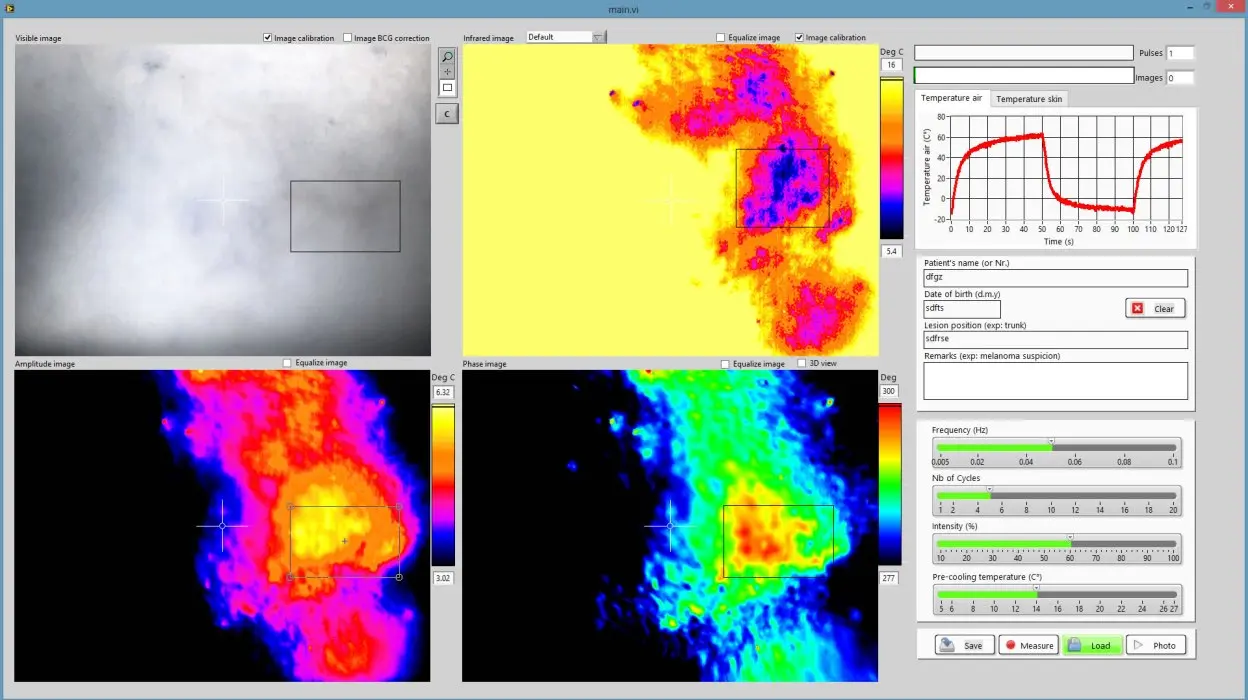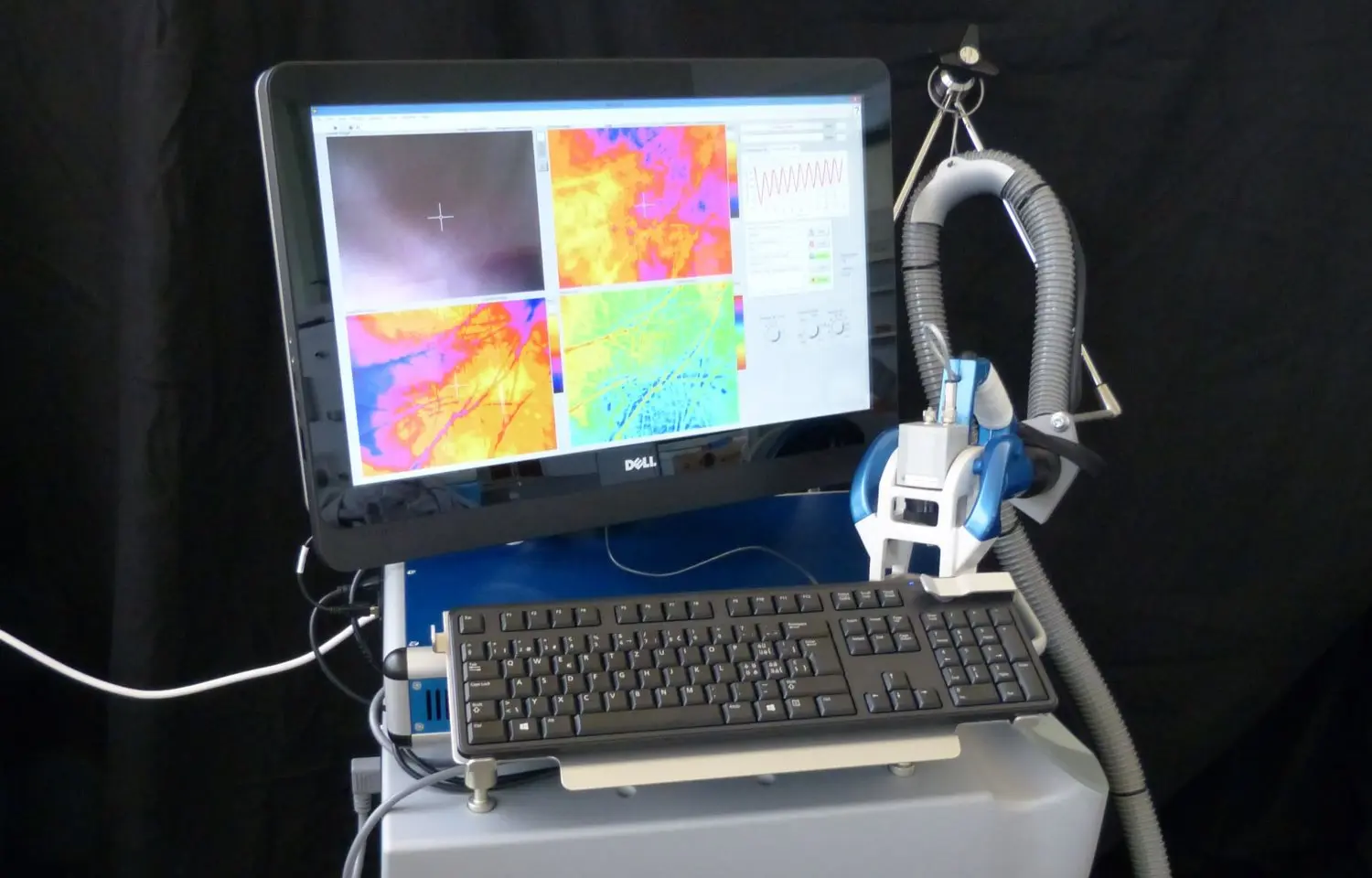Project example: Dermolockin
Researchers and students at the ZHAW School of Engineering are developing an innovative examination method for the diagnosis of skin cancer. Instead of using preventative surgical procedures, skin lesions are examined with a non-invasive infrared camera. Two ZHAW graduates were involved in the development of a diagnostic device suitable for clinics that should be able to detect malignant changes in the skin’s structure.
With more than 15,000 new cases each year, skin cancer is the most common-occurring type of cancer in Switzerland. Early diagnosis significantly increases the chances of recovery and life expectancy. Until now, diagnoses are made subjectively by visually examining the skin. This often leads to the broad surgical removal of potentially malignant skin lesions without a conclusive diagnosis beforehand. An innovative examination method aims to improve diagnosis rates and thus reduce preventative surgical procedures. The idea behind the project is to detect skin cancer using lock-in thermography. “Lock-in thermography is a contact-free test procedure that provides a visual depiction of heterogeneities in surfaces by using precisely targeted variations in temperature and a highly sensitive infrared camera,” explains ZHAW project head Mathias Bonmarin from the Institute of Computational Physics (ICP). “This method has proven itself in the quality assurance process of aircraft components, for example.” Now, the same procedure is to be used to examine human skin.
“Because of the differing thermal and metabolic properties, the infra-red camera produces different signals for healthy skin and for le-sions.”
Dr Mathias Bonmarin, project head, Institute of Computational Physics
System Engineering graduates involved significantly
The skin is stimulated by periodically varied, heated air while taking the measurement. The temperature variations that are triggered on the skin are recorded using an infrared camera. “Because of the differing thermal and metabolic properties, the infrared camera produces different signals for healthy skin and for lesions,” comments Bonmarin. Along with the right software, however, a highly sensitive diagnostic device is also required. System Engineering graduates Bruno Schmid and Daniel Zolliker developed the necessary device at the ICP. During their Bachelor’s thesis, the two graduates improved the design of the diagnostic tool to such a degree, primarily in terms of ergonomics and user-friendliness, that the diagnostic system is now capable of being used clinically. They were supported by ZHAW researcher Nils Reinke and the Centre for Product and Process Development (ZPP).
“The new diagnostic device developed by the students enables a non-invasive examination lasting under a minute and assists derma-tologists in making diagnoses.”
Dr Mathias Bonmarin, project head, Institute of Computational Physics (ICP)
Promising measurements
“The new diagnostic device developed by the students enables a non-invasive examination lasting under a minute and assists dermatologists in making diagnoses,” Bonmarin comments with satisfaction. The Geneva Cantonal Cancer Association and the Gebert-Rüf Foundation are providing financial support for the project.
The diagnostic system is being used at the Dermato-Oncology department in Geneva for a clinical study. If promising results are achieved, dermatologists could soon have a new tool to combat skin cancer.
At a glance
Product website: www.dermolockin.com
Participating institutes and centres:
Participating Bachelor's degree programme:
Project partner:
Funding: Financial support Genfer Kantonale Krebsliga and Gebert Rüf Stiftung
Project duration: 2013-2018 – Continuing as ZHAW-Spin-off Dermolockin.com

